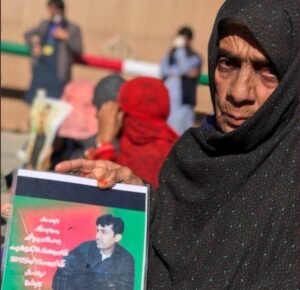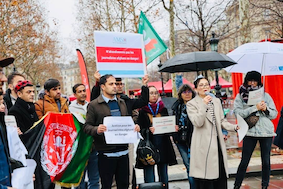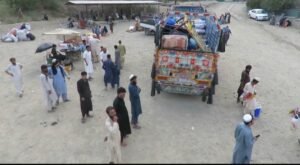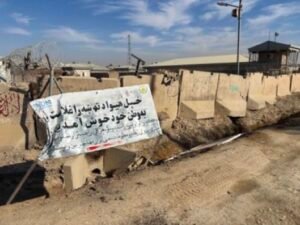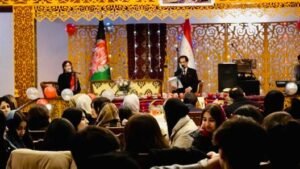Afghan Refugees in Iran Caught Between Repression and Return
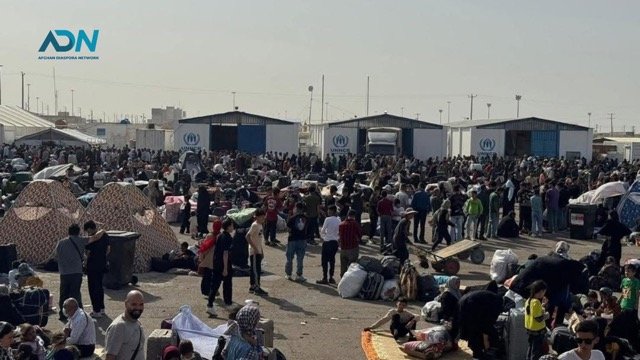
Returning family from Iran. Photo: @Nazari social media
ADN
July 2025: Iran, long regarded as a safe haven for Afghans fleeing war and persecution, is now at the center of an unfolding humanitarian and human rights crisis. Once praised for its inclusive refugee policies, the country has dramatically escalated deportations in recent months, sparking alarm among international aid agencies and human rights experts.
Since January 2025, more than 1.2 million Afghans have returned or been deported from Iran and Pakistan—640,000 from Iran alone, according to the UN Refugee Agency (UNHCR). In June alone, 256,000 Afghans were deported, many under conditions that violate international legal norms, including refoulement concerns.
The situation is more than just a spike in returns—it’s a destabilizing wave hitting a country with shrinking capacity. UNHCR’s representative in Kabul, Arafat Jamal stated:
“Afghan families are being uprooted once again, arriving with scant belongings, exhausted, hungry, scared about what awaits them in a country many of them have never even set foot in. Women and girls are particularly worried, as they fear the restrictions on freedom of movement and basic rights such as education and employment.”
From Sanctuary to Uncertainty
For over four decades, Iran has hosted one of the world’s largest Afghan refugee populations, currently estimated in the millions. Many Afghan families have lived there for generations—children born and raised in Iran, families accessing primary healthcare, and for many, it’s the only home they’ve ever known.
The Norwegian Refugee Council (NRC), which has worked in Iran since 2012, notes that thousands of Afghans still cross into Iran daily, often through informal routes. But the atmosphere of protection that once characterized Iran’s approach has eroded sharply.
In late 2024, Iranian authorities approved a deportation plan to expel two million Afghans by March 2025. This shift triggered a fivefold increase in returns and deportations compared to the previous year.
Officially, only undocumented Afghans are subject to removal. But in practice, many refugees have lost protection due to a bureaucratic transition to Smart ID Cards—a new form of documentation introduced by Iranian authorities. Most Afghans have been unable to obtain these due to financial or administrative barriers. As a result, they are now cut off from public services, unable to work legally, and at heightened risk of deportation.
This shift has left hundreds of thousands in legal limbo. Without legal documents, they can’t work, get healthcare, or send their kids to school—and now they can be deported at any time.
UN Experts Sound the Alarm
The deportations are unfolding in a broader climate of repression following the outbreak of hostilities involving Iran and external actors in June 2025. UN human rights experts have raised the alarm about mass arrests, summary trials, and discrimination against minorities and foreign nationals, particularly Afghans.
In a statement released on June 28, UN experts condemned the wave of detentions, including of Afghan nationals accused of “espionage” or collaboration without credible evidence or fair process. The UN experts also cited troubling hate speech in state-affiliated media, including calls for violence against minorities and language dehumanizing Afghan and other refugee communities.
Experts warn that the situation is particularly dangerous for Afghan refugees, who face increased risks of detention, deportation, and discrimination—often with no legal protection.
The crackdown has included new legislation that equates loosely defined intelligence activities with “corruption on earth”—an offense punishable by death. The UN warned that such measures violate international human rights law and dangerously expand the scope of capital punishment.
In the context of Afghan deportations, these policies contribute to a deeply insecure environment where refugees live in fear—of arrest, of expulsion, and of abuse.
Taliban Inaction
The Afghanistan Ministry of Refugees and Repatriation, now controlled by the Taliban, has conspicuously remained silent on the massive return of Afghans from Iran and Pakistan.
Despite the scale of the crisis, there have been no official statements or updates on the ministry’s X (formerly Twitter) account or website. Instead, the latest post highlights a meeting between the Taliban’s Minister of Refugees and Repatriation, Mawlawi Abdul Kabeer, and a delegation from Jihadi madrassas in Kabul—raising serious questions about the ministry’s priorities.
With no clear plan or communication, returnees are left uncertain and vulnerable, with little reason to expect meaningful support from the Taliban.
A Call for Action
UNHCR, NRC, and other aid organizations are calling on the international community to urgently scale up humanitarian support, both inside Afghanistan and in neighboring host countries like Iran.
With Afghanistan’s economy in collapse, over half the population reliant on aid, and women barred from many aspects of public life, the return of hundreds of thousands of vulnerable individuals—many of whom have never lived in Afghanistan—risks triggering a new cycle of displacement, poverty, and instability.
UNHCR’s humanitarian response for Afghanistan in 2025 is currently only 23 percent funded, severely limiting its ability to support reintegration or provide adequate assistance to returnees at the border.
“We need to act fast,” said Jamal. “We urgently call on the international community to help us respond, not just with emergency aid, but with longer-term support.”
“Forcing or pressuring Afghans to return is unsustainable and could destabilize the region and beyond,” warns UNHCR.

